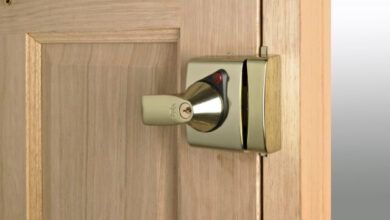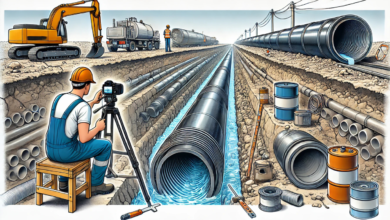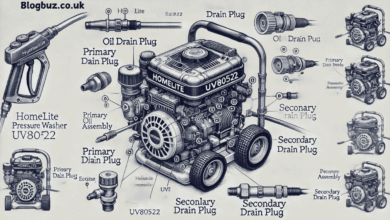Not Just a Drain: How Regular Sewer and French Drain Cleaning Protects Your Property Year-Round

Most homeowners don’t think twice about their drains—until something goes wrong. A slow-flowing sink, a foul smell from the basement, or water pooling in the yard often sparks panic and a call to the plumber. But by the time those symptoms show up, the problem has usually been brewing for weeks or even months.
The truth is, drains do more than move water. They protect your foundation, prevent flooding, reduce soil erosion, and keep your plumbing system balanced. That’s especially true for sewer lines and French drains, two systems that often operate out of sight but play a massive role in the health of your home.
Rather than waiting for an emergency, a year-round drain care strategy—built on timely maintenance and seasonal awareness—can help homeowners avoid costly repairs and structural damage. Let’s explore how and why sewer line and French drain cleaning should be a routine part of your property’s defense plan.
Understanding the Role of Sewer and French Drains
To understand why maintenance matters, it’s important to know what these systems actually do.
Sewer Lines: The Plumbing Highway
Sewer lines are responsible for carrying wastewater from your home to the municipal system or septic tank. Every toilet flush, dish rinse, or shower drain runs through these pipes. If they get blocked or damaged, wastewater can back up into your home—bringing odors, bacteria, and major repair bills with it.
French Drains: The Silent Defenders of Foundation Health
A French drain is a gravel-filled trench with a perforated pipe that collects and redirects groundwater away from your home. You won’t see it working, but it’s constantly diverting excess moisture from your yard and foundation. When clogged or broken, water has nowhere to go—leading to puddles, mold, and erosion.
In short: your sewer line keeps waste moving out, and your French drain keeps water from seeping in. Together, they protect your home from both above-ground and below-ground threats.
Why Cleaning These Systems Isn’t Seasonal—It’s Strategic
Different seasons introduce different risks. Understanding how weather and usage patterns affect your drains can help you anticipate issues before they arise.
Spring: Wake-Up Call After Winter
Snowmelt and spring rains can overwhelm an already compromised French drain system. After months of freezing temperatures, ice expansion may have shifted or cracked pipes. Roots—hungry from a dormant winter—begin seeking water, often intruding into sewer lines.
Spring checklist:
- Check for yard pooling or soft spots
- Inspect drain outlets for flow issues
- Schedule a hydro-jet cleaning to remove early root growth and winter debris
Summer: Peak Usage = Peak Stress
Warm weather means more showers, more outdoor cleaning, more lawn irrigation. With increased water use and ground movement, sewer lines and French drains face more stress than usual. Roots grow faster, and dry soil can shift pipe alignment.
Summer checklist:
- Look for slow drains or gurgling in toilets
- Flush outdoor drains to test flow
- Watch for unusually lush patches in the lawn (a common sign of underground leaks)
Fall: Leaves, Debris, and Drain Blockage
Leaves don’t just fall on your lawn—they clog every exposed drain opening. If they reach your French drain or sewer system, they create stubborn blockages that worsen over time. Add early frost and rain, and you’ve got the perfect storm for a drainage issue.
Fall checklist:
- Clear leaves from drain openings and gutters
- Have drains inspected for buildup before winter sets in
- Clean out catch basins or stormwater systems tied to your French drain
Winter: Frozen Lines, Hidden Dangers
Cold temperatures can freeze shallow drainpipes or cause expanding roots to crack underground lines. Sewer gases trapped in frozen systems may back up into your home. Snow cover also hides signs of blockage until melting reveals the damage.
Winter checklist:
- Keep exterior drains clear of snow and ice
- Watch for basement odors or unusual gurgling in fixtures
- Monitor indoor humidity levels—trapped water or sewer backups can increase moisture
The Real Cost of Ignoring Drain Maintenance
It’s tempting to let drain maintenance slide—after all, if everything seems to be working, why fix it? But this “out of sight, out of mind” mindset can turn into expensive lessons.
Here’s what you risk by skipping sewer line or French drain cleaning:
- Backups inside your home: A clogged sewer line can cause toilets, sinks, and tubs to overflow with contaminated water.
- Foundation damage: Poor French drain performance allows groundwater to pool around your foundation, weakening concrete over time.
- Yard erosion and landscaping damage: Standing water or frequent flooding can ruin grass, garden beds, and hardscapes.
- Mold and mildew: Blocked drains contribute to excess moisture indoors and out—creating the perfect environment for mold growth.
- Tree root invasions: Without regular maintenance, roots continue growing into drains, eventually collapsing the pipe entirely.
How Maintenance Actually Works
Professional sewer line and French drain cleaning isn’t just about flushing water through a pipe. It’s a targeted, thorough process that includes:
1. Camera Inspection
A waterproof camera is inserted into the sewer line or drain system to pinpoint blockages, cracks, and root intrusions.
2. Hydro Jetting
High-pressure water is used to blast away debris, grease, and roots. It’s powerful enough to clear the toughest clogs without damaging the pipe.
3. Root Removal (if needed)
For homes with persistent root problems, mechanical cutters may be used alongside hydro jetting to break through dense growth.
4. Outlet Checks
The final stage involves verifying that the water exits correctly—whether to a storm drain, sump pump, or dry well.
Expert plumbers in Dallas are equipped to perform all these steps efficiently, ensuring your systems are fully cleared and functioning properly before the next seasonal challenge.
Signs It’s Time for a Cleaning
Don’t wait until water backs up into your home. Call for service if you notice:
- Gurgling drains or toilets
- Standing water near exterior walls
- Foul smells in the basement or yard
- Overflowing grates during storms
- Slow drainage in multiple fixtures
Even one of these symptoms can indicate a growing problem. Addressing it early prevents larger, more invasive repairs later on.
Final Thoughts: Clean Drains, Clean Slate
Drainage systems don’t ask for much—just a bit of attention before they’re in trouble. With a little planning and routine cleaning, your sewer line and French drains can do their job quietly and effectively year after year.
Think of it like seasonal upkeep for your roof or HVAC system. You wouldn’t wait for a leak to address roof damage—why wait for a flooded basement or sewage backup to clean a drain?
Stay ahead of the mess. Watch the seasons. And remember that a clean drain is more than a convenience—it’s a silent guardian of your home.




